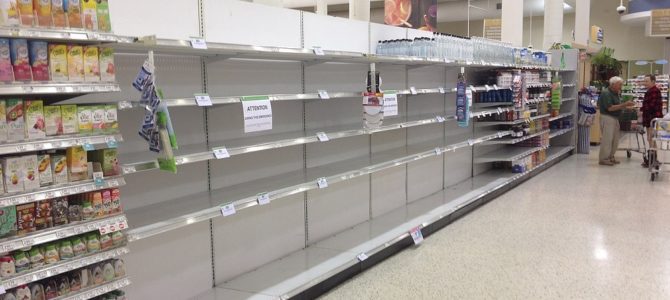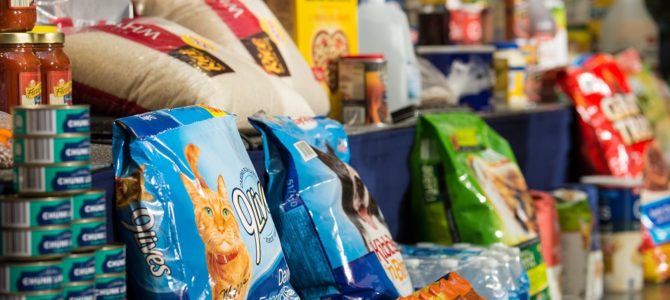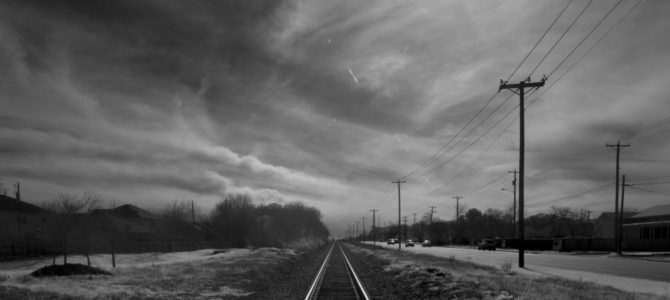
I have lived along the Gulf Coast my entire life, mostly in the Houston Area. I lived and worked in Louisiana when Hurricanes Katrina, Rita, and Gustav slammed into South Louisiana and have learned from my successes and failures and those of my friends.
After moving back home to Texas and a long period of relatively quiet storm activity, Hurricane Harvey was a test of different beast until one of the coldest winters in Texas history. Every storm has taught me that you need to have a plan to survive on your own or as a group for two weeks. I’ve also learned you can spend as little as $200 to survive with no city water, no power, and no heat for three days in zero-degree weather.
Every storm, and the periods afterward, have taught me something new to apply to my preparations for the next one. I’ve found that simple is better, something is going to happen that you did not plan for, and you or your friend group must solve your problems instead of waiting for someone else to do it for you.
Hurricane Katrina
Fresh out of college and with no preparation when Hurricane Katrina hit Louisiana, I evacuated back to Texas. I learned that you should have a plan to evacuate for hurricanes and arrive back home with a plan to survive for weeks.
When I arrived back in Louisiana for work, some areas recovered quickly and others were figuring out they were going to have no power, water, or services for the long haul. A common generator theft resulted in the unsuspecting homeowner waking up to no power and a lawnmower running in their backyard to replicate the white noise of the generator while its owners were sleeping.
Lessons: Be prepared for long-term survival and buy a lock for the generator.
Hurricane Gustav
After the hurricane passed, I arrived in Houma, Louisiana after evacuating while carrying all my preparations to survive for two weeks, some of which I still have today.
One thing I was not ready for was the lack of gasoline and communication systems to support credit card transactions. My lessons learned were to have cash and keep more than ten gas cans (I currently have 13).
Owning simple, shelf-stable foods was a big advantage when trying to repair our home after storm damage with no power. Our friend group pooled resources and repaired each other’s fences and roofs after the storm, saving so much heartache and money.
Lessons: Cash and gas make good friends.
Hurricane Harvey
Even though we did not lose power with Hurricane Harvey in 2017, I was not prepared to wake up to water in the street at the time. Many people woke up with two options: evacuate via boat or wade through water.
I had purchased a water transfer pump before the storm, which saved an entire cul-de-sac from flooding due to a stopped-up storm drain. I learned rain gear does not keep you dry when walking in water.
As part of a small group that was doing high-water rescues all over Houston, I learned to buy dry bags and waterproof waders with booties in them as well as personal flotation devices. You never know when you will have to walk out of your house in hard rain, and you will be thankful that you are dry in that moment. Also, buy flood insurance. Many, many people learned that very expensive lesson during Harvey.
Lessons: Be prepared to evacuate your home in the rain. Know where high ground is located and how you are going to get there. Buy flood insurance.
COVID-19
By the time COVID-19 hit, my wife and I had started to focus on shelf-stable foods and a full pantry. When the crunch on water, food, and toilet paper hit, we saw the need to own more-significant water filtration and storage because water bottles are a temporary solution and people were waiting in lines for hours for these basic necessities.
We purchased a Lifestraw Pitcher and then the Lifestraw Community filter so we would not have to run out to buy water, but could store water in five-gallon cans and have the ability to filter rainwater. In Houston, a major water main broke, shutting off water to most of the city, amplifying a panic that was already slowly building in the early days of COVID-19.
Lessons: Water filtration and toilet paper are highly valuable resources.
Texas Winter Storm 2021
Due to the storm, our family, which includes an 18-month-old and a newborn, were out of power at 2:30 a.m. on Feb. 14. We were out of power with snow and freezing temperatures for 41 hours before the power came on for eight, then was off for 18 hours, before staying on—for now. The water pressure went to a trickle for us after the first day and much sooner than that for other folks.
We were prepared for the power outage and no one slept in the cold at our house. When you are prepared to be self-sufficient for two weeks, three days is not that bad. Here is what we did, and then I will explain how you can do it for far less.
Generator: We purchased a Winco HPS12000HE Tri-Fuel Generator in 2016 after a bunch of research. Generators are tricky in that fuel demand can be an issue in a disaster area if it is too big, but too small of a generator limits what you can operate in your home. As it was, our Winco burned one gallon of gas per hour, and in a prolonged power-outage we could have swapped to natural gas.
A carbon monoxide monitor is a necessity with a generator. Also, hire an electrician to connect your generator to your house or show you how. It is a simple installation and it will make your life so much easier versus cords everywhere in your home.
Water: We had already filled one of the bathtubs before the power went out, an old hurricane preparation trick, so we could maintain functioning toilets. It quickly became clear we would need water for the long term.
Melting snow and ice on the roof during the day was a significant resource, and we just needed to collect it. I emptied six IRIS 82-quart totes and started stationing them on downspouts of the gutters and other places. In 24 hours, we had collected 120 gallons of water, of which we used a small portion for flushing toilets and bath water.
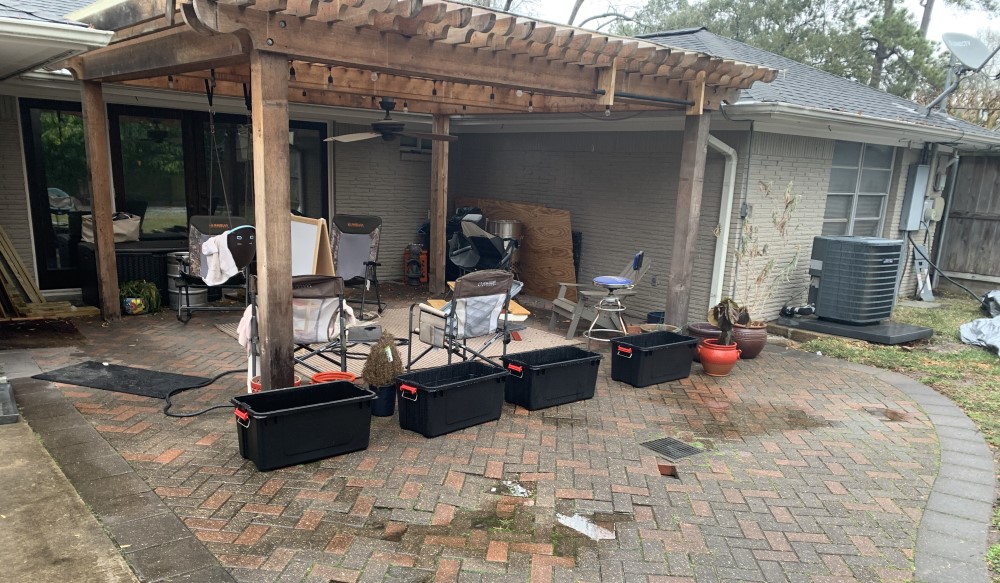
In the South, crawfish pots are fairly commonplace and we have one for our annual crawfish boil. We used the crawfish pot to boil the water and then used it for baths and rinsing dishes. We used one tote for scrubbing dishes and the sink with boiled rain water for rinsing.
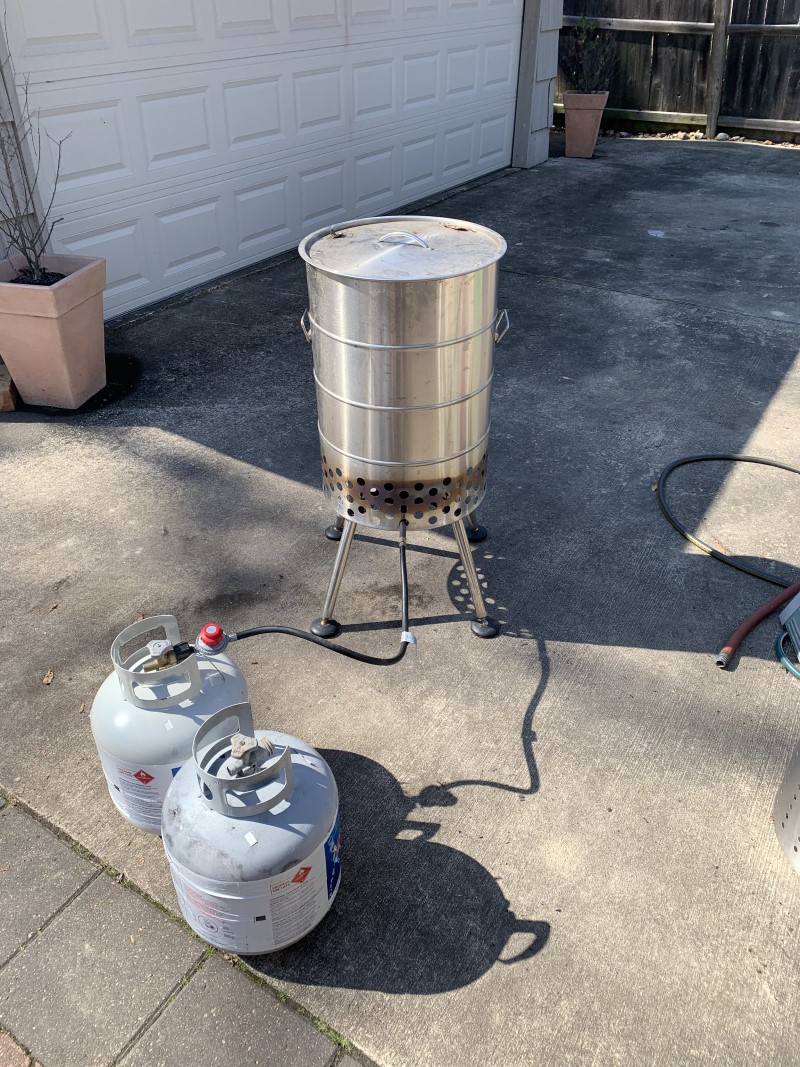
Heat: The generator tied into the power panel via 50-amp 220 volt four-wire plug and ran the furnace, lights, and TV.
For the first time in my life it was cold enough outside to store food. We turned the fridge and freezer off, put the food in an ice chest, and left them outside.
$200 Survival Plan
We have slowly built up our preparations over several years, but you don’t need to buy all these things mentioned above right away. Start with the minimum described below, then work your way up.
My best friend was on the other side of the spectrum of survival, and used several less expensive solutions. He was able to comfortably live with far less and used a little creativity to solve problems as they appeared.
Generator: He had a Honda 2kW with extended tank. He initially was running it for one space heater but found it to be so inefficient that he just used it for entertainment and electronics during the day. (This is not included in $200 total but is not necessary, as you will see.)
Water: Collect it in buckets. Five-gallon buckets from Home Depot can be a real commodity, and boiling the water they collect in a small crawfish pot gives you clean water for cooking food or for a hot bath.
Heat: Use a Mr. Heater Buddy tied into a 20-pound propane bottle. This is a hunter’s best friend in cold winter mornings, and most of us have them. They are approved for indoor use and can heat a room for days. My friend was able to heat his bedroom to 55-60 degrees for two nights and used approximately one-third of a propane bottle.
For cooking, he relocated his grill out of the wind and used a tarp to create a little outdoor kitchen and cut the wind. The heat from the grill made a comfortable outdoor area while cooking and kept the rain and wind off him.
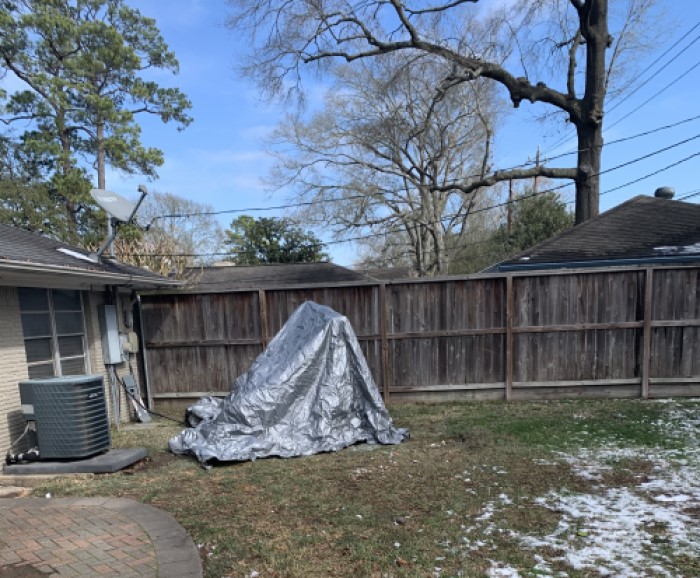
With a few buckets, LifeStraw or Katadyne water filter, gas burner, pot, Mr. Heater Buddy, and a few propane tanks, he could have lived fairly comfortably for a week or more with a small amount of food storage. That is efficient survival.
I learned a few lessons in this storm that we will apply to the next one. The first is that fireplaces are only good at heating the air above your roof and looking cool. Secondly, our single-point failure was the generator. Had it not started or had something else happened, our story would be different. We are buying a few Mr. Heat Buddys and will prioritize propane bottle storage in the future.
We should learn from those suffering from failed systems like Texas’s energy grid manager ERCOT, windmills, natural gas wells, and failed municipal water systems, and seek the successes that result from preparation and self-reliance. These storms highlight more and more that most people do not prepare for a rainy or a snowy day. Don’t be those people.
You do not have to be a crazy prepper to be ready for one of the coldest Texas storms in modern history. You do need to prepare for the day no one is coming, and your own survival is up to you.


